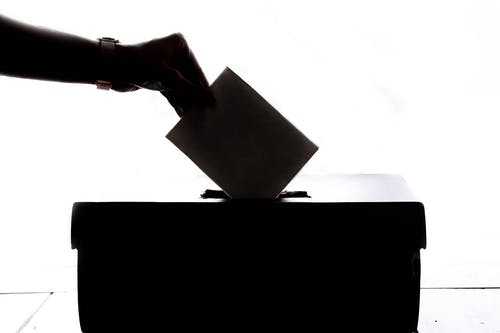Today’s Democratic Party voters are more diverse than ever before, and this year’s Democratic…
The Political Power of Women of Color

In April of 2019, I joined nearly 2,000 women of color gathered at Texas Southern University, a historically black university in Houston, for the first She the People Presidential Forum. At the event, nearly a dozen Democratic presidential candidates – including diverse candidates like Senator Kamala Harris, Senator Cory Booker, and Former HUD Secretary Juliàn Castro – made their case. Issues like access to health care including racial disparities for maternal health, preventing gun violence, and immigration reform were centered. The diversity on stage and in the audience was both historic and affirming for many of us that identify as women of color. This suggested perhaps the time had come when we would be courted for our votes and not just expected to rubber-stamp the presumptive nominee. This is especially true for Black women voters – the most loyal and reliable voters for Democratic party.
But flash forward to Tuesday night, less than nine months later, and the Democratic debate stage lacked a single candidate of color. As the field of Democratic candidates continue to campaign even more heavily in the two least diverse states of Iowa and New Hampshire, an important question remains – what does this mean for the political power of women of color in such a critical election year?
First, it is important to note that women of color are not monolithic. And we must pay attention to the differences in race and ethnicity that drive respective communities. But together there are nearly 37 million eligible women of color voters in the U.S. and those numbers are growing. Women of color aren’t just sitting on the sidelines – they are playing key roles in elections, from voting themselves to motivating and influencing the votes of others in their communities. This energy and activism, especially among Black women was clear in the last major election. In November of 2018, we watched turnout surge, even though most voters tend to drop off in midterm years. Compared to 2014, another midterm election, voter turnout surged among women of color. As noted in a report titled Ahead of the Majority, women of color were central to these historic results. The report states that turnout increased, with significant gains among women of color (37% overall with 48% more Asian American and Pacific Islander or AAPI women, 28% more Black women, and 51% more Latinas).
So, what does that mean moving forward in a presidential election year? A recent report by the Center for American Progress, titled “Women of Color: A Collective Powerhouse in the U.S.,” illustrated several key points about this increasingly diverse and active voting bloc: there are over 13.5 more citizen voting age women of color than there were in 2000, and that number includes a surge in Black women that are eligible to vote – about 3.5 million more than in 2000; Latinas constitute a large share of the electorate in New Mexico and Texas; AAPI women are the most diverse racial group and now hold a large share of the female vote in several states, including California and Nevada; and, Native American women are critical voices in New Mexico and Alaska.
Finally, while women of color represent a true electoral powerhouse, we can’t forget that there are real structural barriers to their participation, which can differ based on race, ethnicity, geography and income. Women – especially those in low wage jobs–are less likely to have the time off to get to the polls because of inflexible work arrangements and caregiving duties. Voter ID laws, gerrymandering, limiting of poll hours and other acts of targeted suppression and discrimination against women of color are used to shut out their voices.
Candidates elected up and down the ballot in 2020 will have the ability to either prioritize or reverse issues of gender and racial equality. The share of women of color as eligible voters is growing – up 59% since 2000 – and all policy makers and candidates should not only take notice, they have an obligation to listen to their voices and prioritize issues that will make a concrete difference in the lives of women of color.







